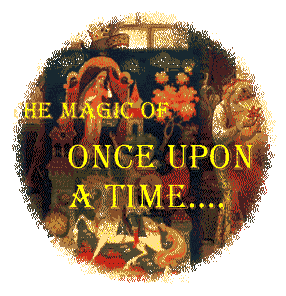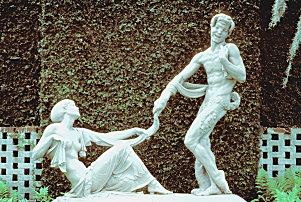|
Narrative Logo - Click for Main Menu Lecture IV: The Origins of Tales
Resolving Psychological Puzzles Karl Jung was one of the early psychiatrists to cite myth, folklore, and legends as a reflection of our inner selves. He argued that there were archetypes present in all of our imaginations, and that we were likely to fill our stories with them. Archetypes are such inherent, instinctual and
primordial images and symbols in all human beings, which often find an unconscious (or
conscious) outer expression in religion, art, mythology, folk and fairy tales, astrology
etc. Jung began to use his archetype notion in 1919 in accordance with his view that the
human soul-life and instinct-nature, in form of "unloaded images," may be traced
back to humanity even on a common and archaic level. An archetype is not the image in
itself, but the unfilled pattern and the possibility to fill out a given pattern (form)
with an imagelike content. In "The Concept of the Collective Unconscious" (CW
9,1), Jung defined archetypes like
Caption: Cupid and Psyche Astrology as an ancient science is a fine example of that kind of varied symbol language, which has developed around archetypical motives. Doctor Jung said that astrology, per se, represents a "summation of all the psychological knowledge of Antiquity. And astrology is, if well used, (quote) a splendid method that can lead to deeper self-knowledge and personal growth." He possessed a profound astrological insight himself, and among other he wrote the book The Aion, which treats the Piscean Age, Christendom, and human evolution. "We moderns are faced with the
necessity While it may seem that the difference between insisting that a Bear represents the Dipper, and that it represents an inner archetype of power and strength, is very small, it is important to note how the means and ends of these scholars diverge. Jung - plus Freud, Bettelheim, and Maria Von Frantz, who we will study as well - were researching with the goal of explaining, and perhaps improving, our inner lives and personalities. This is a far cry from Krupp, who would hold that we may invent later versions of a story which reflect our inner conflicts, but that the origin of the tales was to clarify the objects of the heavens.
Caption: The Egyptian lion goddess, Sekhmet, in the desert The Lion Goddess, Sekhmet--herald of Leo Rising or symbol of unbearable heat?
|


